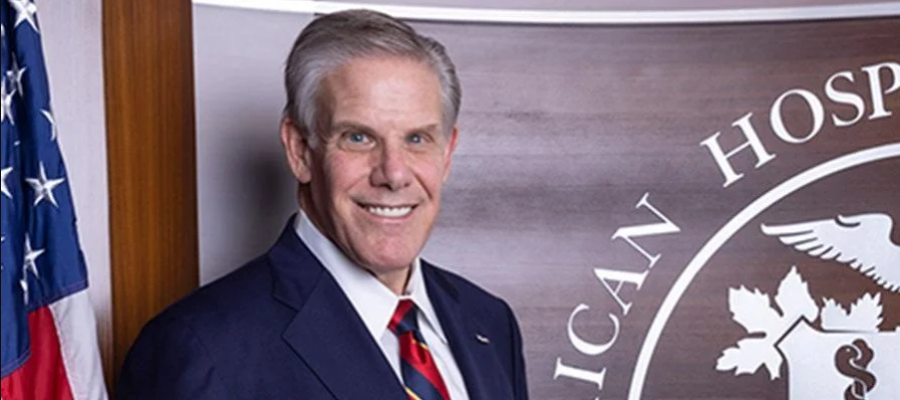Taking Action to Protect Caregivers from Violence

Many people who work in hospitals and health systems say they have been called to a career of caring. Each and every day, they provide patients healing and hope, as well as comfort and compassion.
However, according to the U.S. Bureau of Labor Statistics, in recent years health care workers have experienced an increase in assaults and intimidation, both physical and verbal. Despite the diligent efforts of hospitals, health systems and medical professionals to prevent violence, health care workers remain five times more likely than any other type of worker to be physically attacked on the job.
These experiences cannot help but affect the individual care provider. They also can interfere with patient care when providers fear for their personal safety, are distracted by disruptive patients or family members, or are traumatized from prior violent interactions. Moreover, these types of incidents also consume scarce hospital and health system resources, which in turn could impact the care available for other patients.
That is why the AHA has made passage of the bipartisan Safety from Violence for Healthcare Employees (SAVE) Act (H.R. 2584/S. 2768) a top priority. This critically important legislation would provide protections from assault for hospital workers similar to those in the federal statute that apply to aircraft and airport workers.
Following a Hill briefing on the legislation earlier this year, more than 120 representatives and senators have now cosponsored the SAVE Act bills, and we thank them for their support. That’s a good start, but we need to continue building momentum in both the Senate and the House.
As part of those efforts, the AHA July 31 co-hosted another Capitol Hill briefing with the American College of Emergency Physicians during which congressional staff heard directly from hospital and health care leaders how the legislation will help protect health care workers from violence, alleviate workforce challenges and sustain quality patient care.
Sen. Joe Manchin, I-W.Va, who is a sponsor of the Senate bill, delivered remarks, noting that enactment of this bipartisan legislation would be a significant step forward in protecting our health care workforce. Other speakers included: Mark Boucot, president and CEO, WVU Medicine Garrett Regional Medical Center and WVU Medicine Potomac Valley Hospital; Rachel Culpepper, R.N., general medicine service line director, Indiana University Health West Hospital; and James Phillips, M.D., from the American College of Emergency Physicians.
The AHA is grateful to these outstanding health care leaders for sharing their stories and concerns. And we are asking all hospital and health system leaders and health care workers to do the same.
The August congressional recess is upon us. And the next few weeks are an opportune time to meet with your federal lawmakers and their staff to hammer home the importance of protecting our health care workforce. It’s imperative that we continue to build support and momentum for the bill to increase its chances of being enacted.
At the same time, addressing this issue doesn’t rest entirely with Congress. Hospitals and health systems throughout the country are engaged in many efforts to enhance workforce safety and decrease incidents of violence. For example, WellSpan Health, the 2024 recipient of the AHA Quest for Quality Prize, has created a Behavioral Health Emergency Response Team, which has de-escalated such incidents by 75% since 2019 by increasing capacity for their team members to respond to situations that could result in violence.
The AHA’s Hospitals Against Violence initiative shares examples and best practices with the field about workplace and community violence, and has many resources such as fact sheets, podcasts, blogs, videos, toolkits and other materials to help caregivers implement successful violence mitigation strategies.
In addition, AHA’s American Organization for Nursing Leadership has been a leader in promoting a culture of safety in workplace settings, sharing resources and strategies with their members, and working with the Emergency Nurses Association to develop guiding principles and toolkits to mitigate violence in the workplace.
We’ll continue sharing resources, including ones that can assist your advocacy efforts. But the most powerful message will be health care workers sharing their own stories with their lawmakers.
The vast majority of us get to go to work each day without undue concern about facing the threat of violence. Caregivers and other health care professionals are the heart of our nation’s health care system. They deserve no less.

